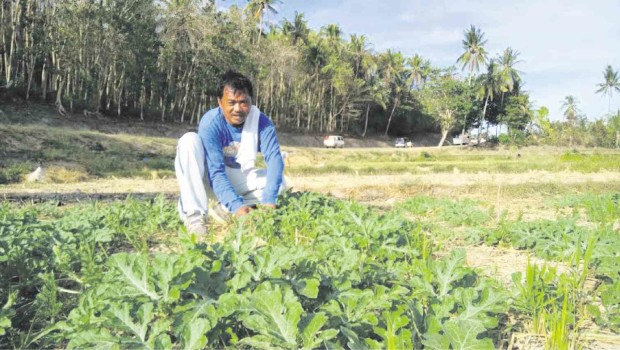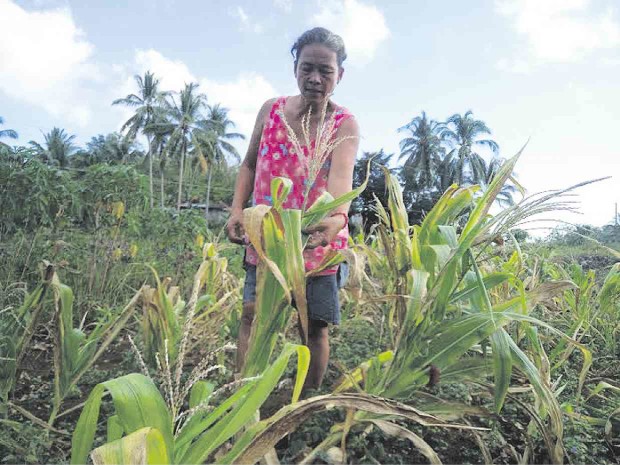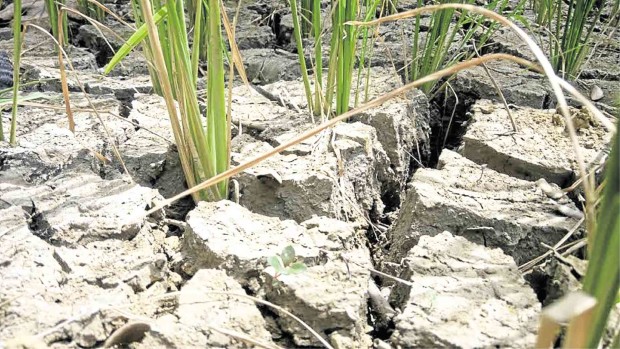Drought-stricken Bohol is getting thirsty
(Last of two parts)
PILAR, Bohol—The drought ravaging the island-province of Bohol did not just affect farmlands but also sources of drinking water, especially for residents of mountain areas.
“We lack potable water,” said Larry Pamugas, assistant provincial agricultural officer.
Some towns, like Albur and Dauis, were distributing water to villages through fire trucks, he said. Sources of water in those areas have dried up. Queues of residents carrying pails and other containers have become familiar sights.
Russel Villas, council secretary and information officer of Antequera town, said surface water sources—springs and ponds—had dried up. The water level of the reservoir in the villages of Tabuan and Ubojan also dropped.
Article continues after this advertisementA state of calamity was declared in Antequera on March 21, when water supply all but disappeared. Some of the calamity funds were used to buy water tanks.
Article continues after this advertisementIn the village of Bantolinao, the lack of water is more deeply felt as a third of the 1,226 residents depend on pumps and deep wells.
Village officials have banned bathing in pumps. One sign reads: “Thank you. Bathing is prohibited here due to the intense heat. A P200 fine will be imposed … .”
Conrada Pagod, Bantolinao village chief, said the ordinance, when enacted in 2014, originally banned bathing and washing in traditional water sources, such as creeks, to protect them from pollution.
“Bathing in the creek is not allowed in our village, especially now,” Pagod said. “We get our drinking water from the creeks because bottled water is expensive.”

Donald Quim grows watermelons for extra income for the family while the drought is drying up the land. Watermelons and beans thrive well during the dry season. LEO UDTOHAN/INQUIRER VISAYAS
The women of Bantolinao and other villages have to walk at least 7 kilometers to the nearest river, in the village of Can-umay, to wash clothes. In some towns, women and children spend hours walking to and from water pumps and wells to fetch water.
Farmer Jerelyn Sabote, 42, who walks a kilometer daily to fetch water, said she had been looking at the sky for days, hoping for signs of rain.
In March, her husband, Lando, harvested only three sacks of palay from a 3,000-square-meter rice paddy, which had dried up.
Shifting to other crops
As the drought dries up the fields, some farmers are fighting to survive. They have shifted to other crops that are drought-resilient, such as watermelons, bitter gourd (ampalaya) and string beans.
Watermelons have started to flower in the 300-square-meter farm of Donald Quim, 46, of Barangay Taug in Lila town. He expects to harvest in mid-May.
Quim said he started planting watermelons in March last year after he was convinced by his wife, Luzviminda, that these were more profitable. Last year, he earned P7,500 from 375 watermelons, which he sold for P16 to P20 a kilo.
He said watermelons could survive hot weather although they still needed to be watered twice a day.
In the neighboring town of Dimiao, at least 50 farmers in Barangay Balbalan, known as Bohol’s “watermelon country,” just started planting.

FACES OF DROUGHT Farmer Celestina Tongco (left) gazing despondently at her withered corn crops in Bohol province.
Ricardo Cagas, 50, planted watermelons in early April in his 300-square-meter farm and expected to harvest the fruits in June. His wife, Rosita, and their three grown children—RR, Lemuel and Gladys—help in the farm.
Cagas said he liked planting watermelons because the waiting time to make a profit was shorter.
“It is faster to earn money in watermelons. The palay can be harvested in 120 days while watermelons, in a month and a half,” he said.
Another farmer, Eduardo Lagrada, planted watermelons during the dry season. He hopes to harvest in time for the opening of classes in June so he will have money for his children’s school needs.
Some farmers, like Eleuterio Patana, 57, and Sergio Bakilid, 56, are growing bitter gourd and string beans, which also thrive during the dry season. Bakilid said string beans could survive with little water.
Farmers in Loboc town have also planted watermelons. Those in Carmen and Sierra-Bullones also grow pineapples, aside from watermelons.
But farmers who still rely on palay and corn are hoping their prayers for rain will be answered.
